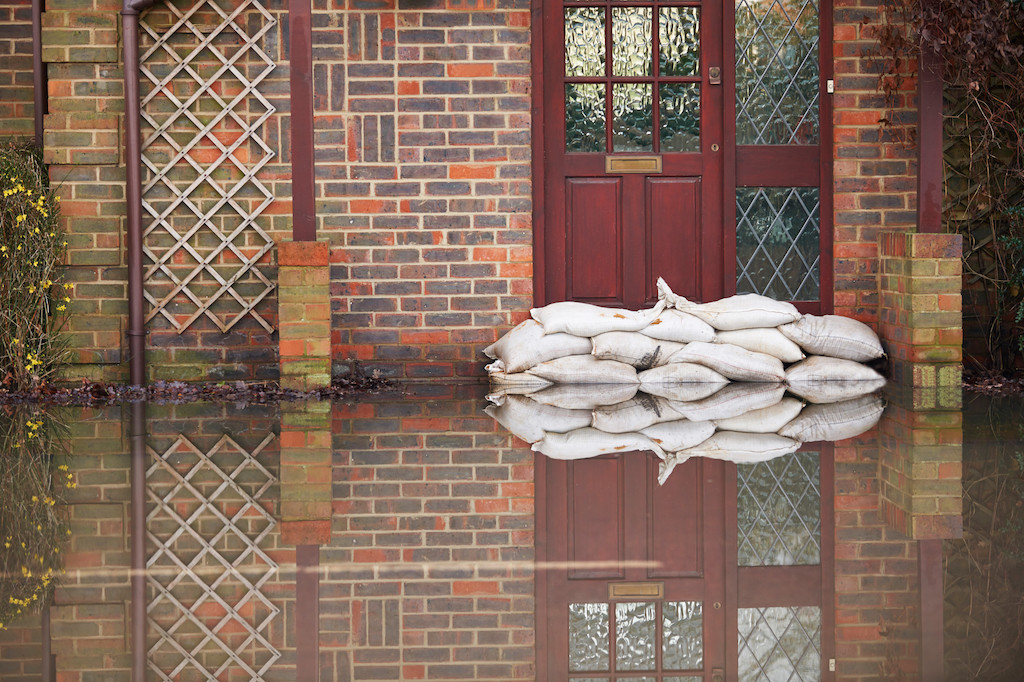
House flooding can be devastating to the people affected by it. Learn how to prevent floods and save your livelihood with these 9 tips.
Annual flood losses in the U.S. average $8 billion.
The financial stress of your home flooding is only one part of the equation. You stand to lose irreplaceable items when dirty flood waters enter your home.
Sometimes flooding isn’t preventable. If your entire city is underwater, you can’t likely escape dry.
But you can prevent many types of flooding, whether it’s from rain or plumbing leaks. Doing a little work now can save you major money and stress when the water starts rising.
Consider these top tips on how to prevent floods.
1. Evaluate Your Flooding Risks
Flooding can happen anywhere, especially flash floods from torrential rains or flooding from plumbing leaks. But some areas have a higher risk of flooding due to their location.
Look at the risks of flooding in your area to know how to prevent floods. If your risks are low, a few minor change might work. If you’re in a flood plane, you may need to invest in more substantial flood prevention techniques.
FEMA offers a flood map tool. Enter your address to check your flood risks. The map shows the surrounding area, where you can see nearby places with higher flooding risks.
Normal homeowners insurance doesn’t cover flood damage. You need special flood insurance if your home is at risk. Better Flood Insurance provides a useful resource about flood insurance.
Inspecting your home gives you specific areas that you need to address. Look for things like cracks or gaps where water can easily enter your home. The way water flows through your yard can also cause flooding.
2. Install a Sump Pump
Sump pumps remove water from the basement. This is a good option if you get water in your basement frequently. If the sump pump can keep up with the water, it can prevent flooding inside your home.
When choosing a sump pump, pick one with battery backup. That keeps the pump running even if storms knock out power to your home. Make sure the battery backup is charged during rainy periods when you might need the sump pump.
3. Seal Cracks and Repair Damage
Does your foundation have cracks in it? Those gaps give water an easy access point into your home. Seal up those cracks to help keep your home dry.
You can also apply sealants and coatings designed to keep out water over your entire basement or foundation. Sealants are straightforward to apply, making this an affordable way to prevent flooding in your home.
4. Direct Downspouts Properly
Gutters and downspouts help move water from your roof and away from your house. Keep your gutters clear of debris to keep the water flowing.
Then, look at where your downspouts end. Do they shoot the water right toward your foundation? If so, move the end so it pushes the water away from your house.
Another option is putting a rain barrel at the end of your downspout. The barrel collects the water so it doesn’t flow near your home. The collected water works well for watering plants, washing cars, or handling other outdoor tasks.
5. Learn How to Prevent Floods With Grading
Water follows the natural slope of your property. If that slope leads right to your foundation, that’s where water pools during heavy rains.
Changes to the slope of your property can help direct water around your home. You can slope the ground away from your home to keep the water away.
French drains also help move water away from your home. They’re ditches filled with gravel with a perforated pipe running through it. They can go near your foundation or through your property where water is an issue.
Landscaping changes improve water control. Lots of concrete or similar impervious ground cover materials cause water to run off instead of soaking into the ground. If the concrete is near your home, that can lead the water inside.
Green space around your house is often a better option. A rain garden helps prevent water runoff so the rain can soak into the ground.
6. Use Sewer Backflow Valves
An overwhelmed sewer system can send flood water into your home through drains, toilets, and other plumbing fixtures. A backflow valve only lets water flow one way. That can keep the flood water from going into your home.
You can save money on renovations by doing it yourself. But some renovations are best left to the pros. Installing backflow valves is one of those things if you don’t feel comfortable working on your plumbing.
7. Install Flood Vents
When you think of flood prevention, you likely think of keeping water out of your home completely. But some methods let water flow through your home to cut down on damage. Flood vents are one such option.
These vents in the foundation help relieve pressure outside the house. They also keep water moving through the home instead of letting it build up inside.
8. Use a Flood Alert Device
Flood sensors alert you as soon as they detect water in your home. They alert you of the water before it becomes a major leak that floods your home. This lets you shut off the water valve quickly.
The sensors can integrate into a smart home system. Many devices check for other issues, too, such as temperature changes that indicate a problem with your HVAC system.
9. Minimize Flooding Damage
You’ve taken steps to prevent flooding, but water somehow finds its way into your home. What do you do?
Take steps based on the source of flooding to minimize how much water gets inside your house. You can also move items to protect them from the flooding damage.
If you have an internal flooding source from your plumbing, shut off the water line where it comes into your home. Any water already in the system can still leak into your home, but you stop any more from entering.
If rain or flash flooding is nearing your home, you may have luck with sandbags. These take time to fill. If your property is in an area prone to flooding, start prepping the sandbags early.
When you can’t stop the water from entering, start moving your valuable items to higher ground. Carry smaller items to an upper floor of your home.
Heavier items such as furniture and appliances may need to stay put. Raising them using concrete blocks or other secure items can keep them out of the flood water to prevent damage.
Protect Your Home
Now that you know how to prevent floods, keep reading our blog to find more tips for your home. If you’re ready to move to an area with less flooding, read about real estate marketing ideas that help you sell quickly.
Related posts
More Reads
Exploring the Charm of Old World Cities: A Guide to Planning Your Canadian Adventure
Introduction to Canadian Tours Exploring Cultural Heritage With its wealth of history and cultural diversity, Canada offers a tapestry of…
Enhancing Home Decor with Artificial Flowers and Greenery: Tips and Trends
Understanding the Appeal of Artificial Greenery The allure of verdant spaces within our homes has increasingly drawn individuals toward the…



